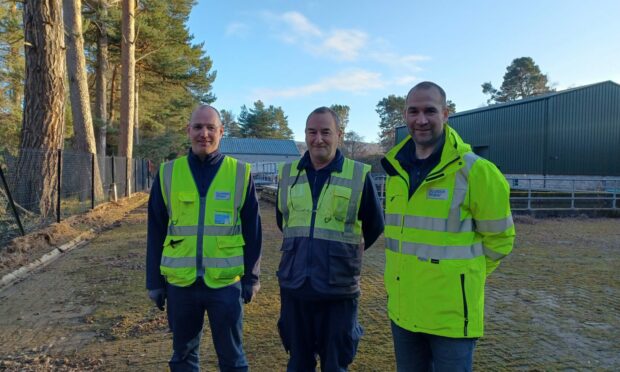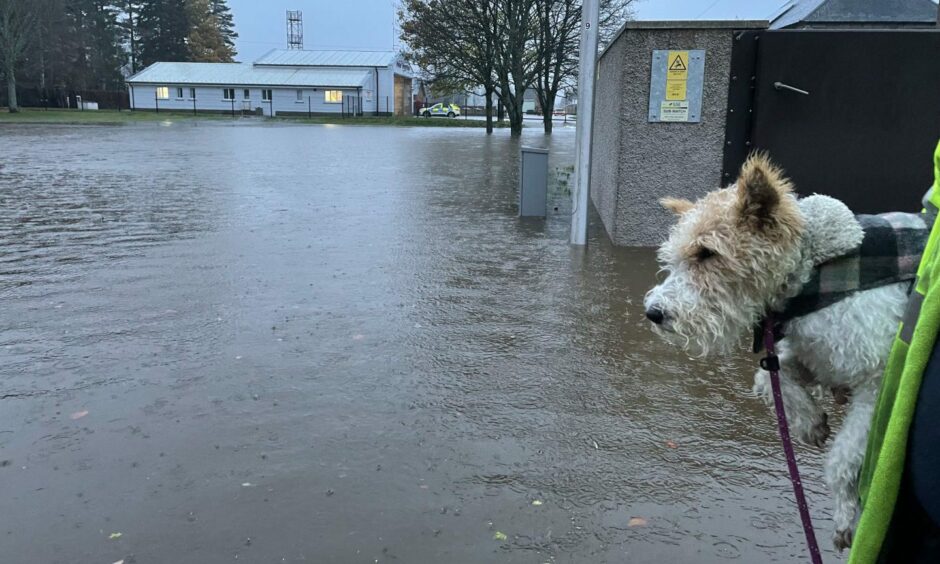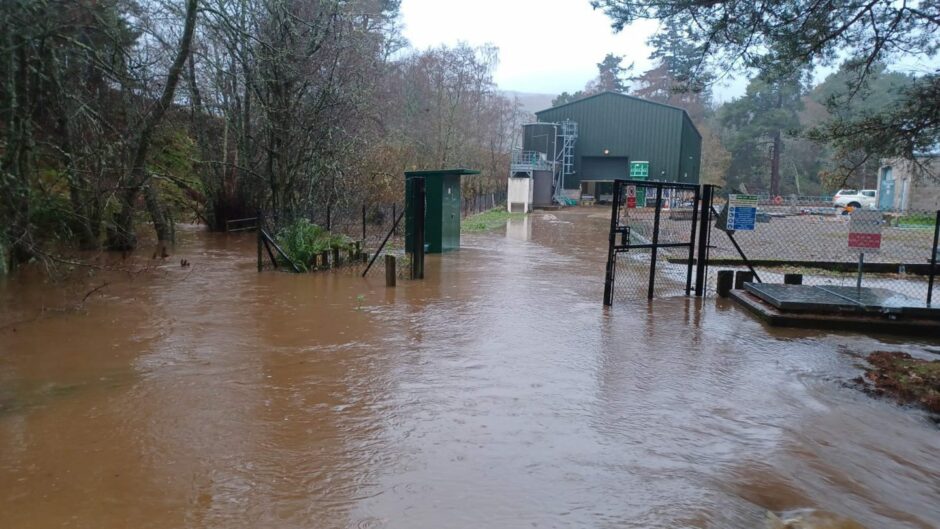Flooding in Ballater has been described as “worse than Storm Frank” by Scottish Water staff.
Heavy and persistent rain battered Aberdeen and Aberdeenshire a fortnight ago, causing severe flooding in areas.
Dozens of water tankers had to be used every day to ensure homes and businesses could continue to turn the tap on.
Sepa issued 16 flood warnings and four flood alerts across Aberdeenshire a fortnight ago, with the Met Office also issuing an amber weather warning.
The Aboyne area was one of the hardest hit with flooding after five inches of rain fell between the Wednesday and Saturday.
Many were lucky to escape flood damage to their homes, but did have to deal with power outages caused by the stormy weather.
Meanwhile, Scottish Water staff were battling to safeguard the water supply to homes and businesses when the flooding hit.
Kes Juskowiak, water operations general manager, praised the early intervention of Scottish Water staff in responding to the severe weather.
He said: “The response of teams across the affected sites was amazing.
“The actions they took in the early stages protected our customers and, had they not taken the action they did, we could have faced very significant longer-term problems.”
Water treatment works forced to shut
The River Gairn breached the Ballater Water Treatment Works, forcing it to shut down.
Graeme Stephen, senior treatment operator, said the floods on November 19 were “the worst he’s seen”.
A tankering operation swung into action, moving 32 loads of water each day from the Friday until Tuesday, to ensure people in Ballater and the surrounding area could still access fresh drinking water.
Having spent 22 years at the Ballater site, Mr Stephen knew early on there was likely to be an issue.
He said: “The river runs high several times a year, but this time it wasn’t long before we were flooded. It was worse than Storm Frank; it was the worst I’ve seen it.
“I had to shut down the site as the well had flooded and the pumps were underwater. We tried to save them, but it was beyond our control.”
Power had to be shut down across the station for safety reasons, while the onsite team battled throughout the day to pump out the water.
More than a dozen pumps were knocked out of action as they became submerged under the floodwater, including those for servicing, sampling and treatment.
Each has had to be kiln-dried and reinstated, work which is still ongoing.
Reservoir flooded for second time in seven years
At Inchgarth Reservoir in Aberdeen the water overtopped for the second time in seven years as the River Dee, which flows next to the site, rose 18ft in just over 12 hours.
When it was built, it was said to have a one in a 200-year chance of overtopping.
Flood mitigations installed after Storm Frank prevented its pumping station from being flooded from the outside, but internal flooding in the basement saw the team rush to respond to the emergency.
Craig Christie, water operations team leader said there were serious implications from the reservoir overtopping, coupled with the flooding of a pumping station.
He said: “Aside from the obvious risk of flooding, there could be damage to the infrastructure, which causes a real problem in the supply of water.
“Ultimately, if all the pumps went down, Inchgarth stops operating and so does Mannofield Water Treatment Works. That prevents the supply of water to 250,000 people across Aberdeen and Aberdeenshire.”
A secondary and emergency sump pump is being installed to provide resilience in severe weather conditions.
Aimee Kent, water treatment operator, was on standby and called out to support the efforts on-site.
She explained that although actions were taken following Storm Frank the inside of the chamber that feeds the river water into the reservoir was flooded this time.
She added: “We know that we’ll continue to face this as we get hotter summers and wetter winters. I can definitely see us being flooded again. But we will pull together like we did this time and work hard to get the site up and running as soon as possible.”




Conversation